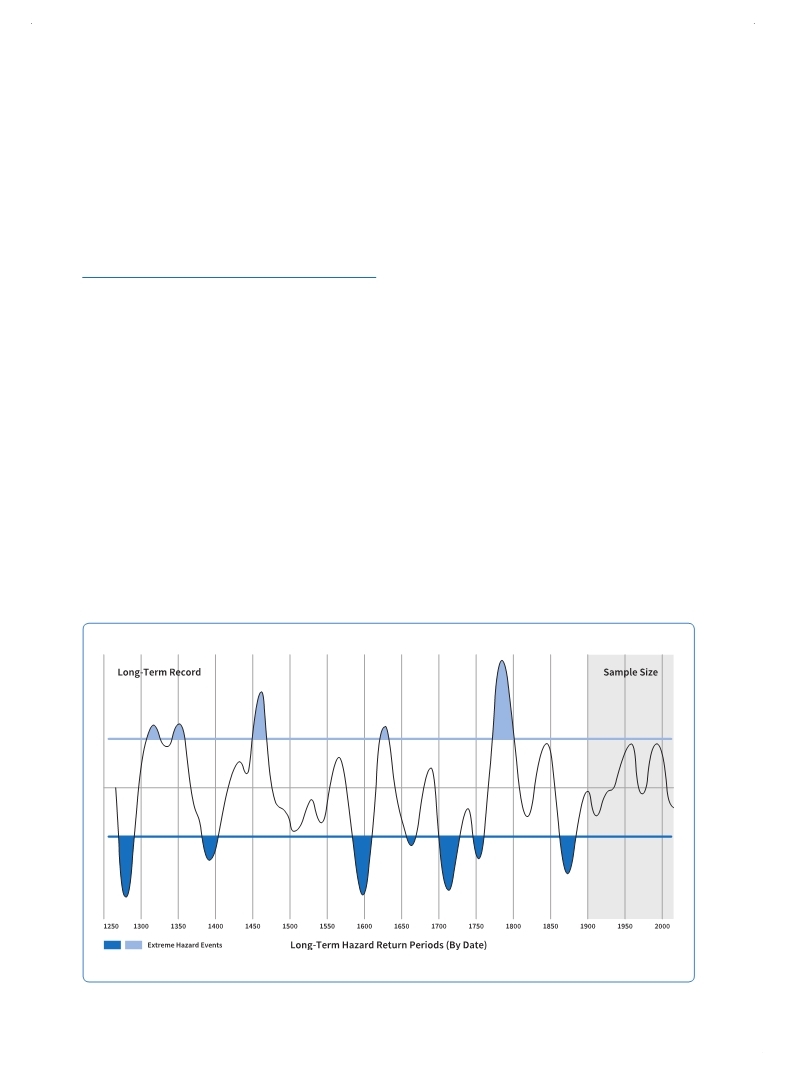 |
Global Assessment Report on Disaster Risk Reduction 2015
Making development sustainable: The future of disaster risk management |
 |
Global Assessment Report on Disaster Risk Reduction 2015
Making development sustainable: The future of disaster risk management |
|
|

54
Part I - Chapter 3
3.1 Accumulating contingent
liabilities
While historical losses can explain the past, they do not necessarily provide a good guide to the future. Most disasters that could happen have not happened yet (UNISDR, 2013a
UNISDR. 2013a,Global Assessment Report on Disaster Risk Reduction: From Shared Risk to Shared Value: the Business Case for Disaster Risk Reduction, Geneva, Switzerland: UNISDR.. . Probabilistic models therefore “complete” historical records by reproducing the physics of the phenomena and recreating the intensity of a large number of synthetic events. As such, they provide a more complete picture of the full spectrum of future risks than is possible with historical data. While the scientific data and knowledge used is still incomplete, provided that their inherent uncertainty is recognized, these models can provide guidance on the likely “order of magnitude” of risks.
The results of probabilistic risk models are normally presented in terms of metrics such as average annual loss (AAL). The AAL is the average expected loss annualized over a long time frame.
Figure 3.1 The small sample size of hazard records
(Source: GFDRR, 2014.)
While historical losses can explain the past, they do not necessarily provide a good guide to the future. Most disasters that could happen have not happened yet.
The global expected average annual loss (AAL) in the built environment associated with tropical cyclones (wind and storm surge), earthquakes, tsunamis and floods is now estimated at US$314 billion. This risk presents a real challenge to the global agenda of sustainable development.
|
 
Page 1Page 10Page 20Page 30Page 40Page 44Page 45Page 46Page 47Page 48Page 49Page 50Page 51Page 52Page 53Page 54Page 55->Page 56Page 57Page 58Page 59Page 60Page 61Page 62Page 63Page 64Page 65Page 66Page 67Page 68Page 70Page 80Page 90Page 100Page 110Page 120Page 130Page 140Page 150Page 160Page 170Page 180Page 190Page 200Page 210Page 220Page 230Page 240Page 250Page 260Page 270Page 280Page 290Page 300Page 310
|
|
 
|
 
|
